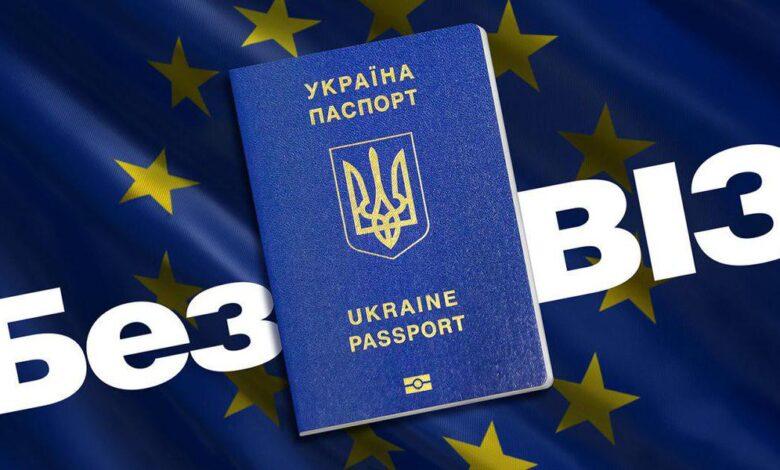Visa-free travel for Ukrainian refugees: how are the days of stay counted after temporary protection?

The visa-free regime with the countries of the European Union, which opened the door for millions of Ukrainians, is a complex system of restrictions, risks and bureaucratic traps. In 2025, this topic takes on a new meaning: more and more citizens of Ukraine find themselves in a situation where the term of temporary protection has ended, and the return to the visa-free regime presents them with new challenges. A clear understanding of the rules of staying in the EU becomes critically necessary, because even an unintentional violation can be very expensive – up to an entry ban.
How the 90/180 rule works
The visa-free regime allows Ukrainians to stay in Schengen countries for no more than 90 days during any 180-day period. This is not three months once every six months, but a so-called “moving window”: every day when you are in the EU or planning a trip, you need to count back 180 days and calculate how many days you have already been in the EU during this period. If it is less than 90, you can enter. If more, you risk being violated, even if you stay one day longer.
Most often, it is this rule that causes unexpected problems at the border. People believe that they can stay in Schengen for “three months”, return to Ukraine for a few weeks and leave again. But if those three months were filled with only 40 days of “break”, the new trip already violates the limit. This becomes especially difficult in the case of multiple short visits: even if each one lasted only a week, in total they can exhaust the entire limit.
For example, if you were in Poland from January 10 to February 20, in the Czech Republic from March 5 to March 25, and then from May 15 to June 5 in Italy, then when planning a trip for July, you should carefully calculate each day from the previous 180 days – because you may only have a few legal days left.
What changes after the loss of temporary protection
For millions of Ukrainians who found refuge in EU countries after the start of the full-scale war, temporary protection became the main legal mechanism for legal residence. This status allows you to stay in Europe without a visa: to live, work, receive medical care, education, renew documents without a limit of 90 days. But he is not eternal.
In 2025, part of the EU states will begin to gradually review and wind down these programs. Some are setting new re-registration deadlines, some are reducing the period of validity of resident cards, and some — like Hungary or Spain — have actually transferred all new arrivals to other legal bases. Ukrainians who did not renew their registration, lost their status, or voluntarily left the country, automatically return to the visa-free regime.
The key thing to know: the days of stay in the EU during the period of temporary protection do not count towards the visa-free 90 days. That is, even if you have been in Germany for a year, your visa-free counter is “zeroed” only after the status expires. It is from this moment that every day begins to count again. And many do not understand this – and already a week after returning to Europe, they risk becoming a violator.
What will happen if you exceed the allowed term
The European Union in 2025 will no longer ignore minor violations. If you overstay, the consequences can be severe:
– In the best case — an administrative fine. In Germany, it can be 500-1,200 euros, in France – up to 3,000 euros.
– In most cases, deportation from the country with a ban on return for 1-5 years. The corresponding decision is entered into the SIS (Schengen Information System) database, and even if you try to enter through another country, the system identifies the violation.
– In the long term – a spoiled visa history. Any future applications for a student, work or even humanitarian visa may be rejected due to the fact of violation of the visa waiver.
– Even transit through European airports can become a problem if your passport is already associated with non-compliance with migration rules.
How not to violate: we check the days correctly
The best way to avoid error is to keep records. First of all, you need to carefully check all the stamps in the foreign passport. The date of entry and exit must be clear. Any ambiguity is a risk of miscalculation both on your part and on the part of the border guards.
The official calculator from the European Commission is one of the most reliable tools that allows you to enter your travel dates and get the exact answer: how many days are left within the 90/180 rule.
Mobile apps like Schengen Calculator, 90 Days Visa Tracker, or any similar smartphone app are another way to keep track, especially if you travel frequently and to different countries.
What to do if you plan to stay in the EU for a long time
Visa-free is not a tool for long-term stay. If you plan to stay in Europe for more than 90 days, you should apply for another status in advance:
– National visa type D – for example for students, workers, researchers or treatment. It is drawn up at the consulate in advance.
– Temporary residence permit (residence permit) — often issued after arrival on the basis of work, volunteering, marriage, humanitarian reasons, etc.
– Application for extension of stay — in case of exceptional circumstances: illness, child care, military danger. But these cases must be clearly documented.
– Temporary departure to non-Schengen countries is sometimes an option for those who want to “buy time”. For example, a stay in Montenegro (up to 1 year), Great Britain (up to 6 months), Cyprus or Georgia (up to 90 days) is not included in the Schengen limit.
European border guards no longer believe in phrases like “I didn’t know”, “I thought it didn’t count”, “I was under protection”. They have access to the full history of your crossings, registration, temporary protection records and can check the situation in a few clicks.
If you assume that you will switch to visa-free again, prepare in advance. Do not expect that you will be able to “slip through”, especially if you enter countries like Germany, Belgium or Austria – there are automated verification systems and your history will be visible immediately.
In 2025, Europe will clearly record all movements, count the days, control the circulation of Ukrainians within its borders and expect us to be responsible for our compliance with the rules. The status of temporary protection has ended — a new stage of responsibility begins.
Remember: one extra day and your next trip may not happen. But if you time it, stay tuned, and act proactively, the borders will remain open.





